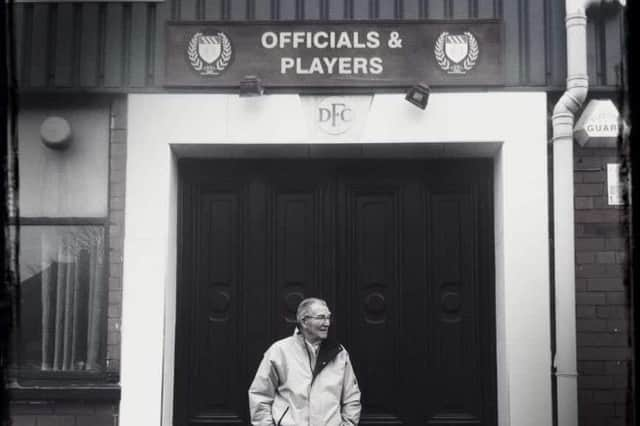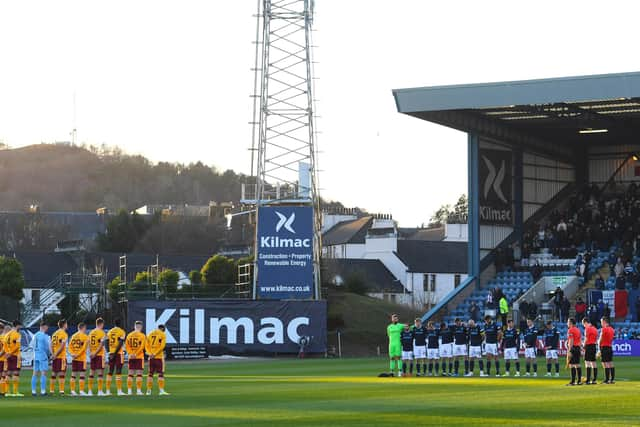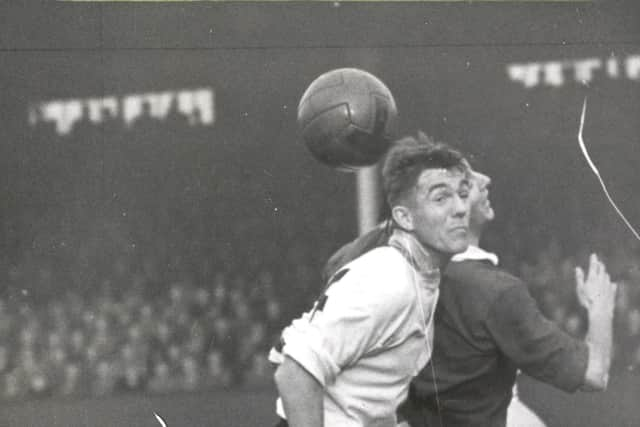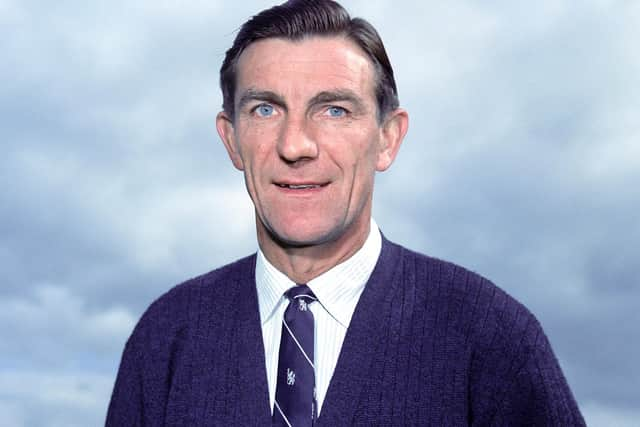Dundee legend Doug Cowie: Oldest surviving Scotland internationalist, last link to storied era, 'best-ever, better than Billy Steel'


The stand, which celebrated its centenary in September, was a relatively new, modern structure when Cowie was a member of the Dundee side who brought back the League Cup in 1951, and then did so again in 1952. Dundee were the first team to successfully defend the trophy.
Cowie also represented Scotland at two World Cups while winning 20 caps. A last living link to the finals in 1954 and 1958, he was Scotland’s oldest surviving internationalist. Former Rangers and Airdrie inside forward Ian McMillan, now 90, has been bequeathed this status.
Advertisement
Hide AdAdvertisement
Hide AdAn impeccably observed minute’s silence was held for Cowie at Dens Park on Saturday. Dundee then delivered the finest tribute possible by sweeping Motherwell aside 3-0.


As the low winter sun lit up the denizens of one of the last remaining Leitch stands still standing in British football, the thought struck that the same ornate iron beams arcing over the heads of those standing in tribute would have arced over a sea of cloth-caps worn by those who gathered to watch Cowie in his pomp. The same floodlights, installed in 1959, illuminated his twilight.
The left-half joined Morton as player-coach the summer before Dundee’s 1961-62 league triumph, their finest hour. Those who lament the lack of loyalty in football these days should consider the case of Cowie, who was released against his wishes after 16 seasons and a record 445 appearances. Cowie still believed he had another couple of seasons left in him.
Football could be just as brutal then as it is now. Bob Shankly felt the left-half, then 34, was getting too old, but proceeded to puzzle Cowie by signing winger Gordon Smith, who, at 37, was three years his senior.
Even the most rudimentary scan of the newspaper archives from the 1950s identifies Cowie as one of the key players in Scottish football. He made his Scotland debut in a 2-2 draw against England at Wembley in 1953. As we stood in silence on Saturday, Motherwell fans included, it really felt like we were saying farewell to someone woven into the very fabric of the Scottish game.


Cowie is certainly woven into the fabric of Dundee Football Club. The Doug Cowie Lounge is where current manager James McPake and his coaches discuss tactics ahead of each match and where, pre-Covid, press reporters would gather after matches for interviews.
Cowie himself opened the suite as recently as 2014 and was able to walk to Dens Park from his house in the nearby Clepington Road. The Cowie family – wife Elizabeth, known as Bette, son Doug junior and daughter Gloria – moved there in 1963.
As well as convenient for Dens Park, it also proved handy for Tannadice, where he coached for a spell under Jerry Kerr at Dundee United. Cowie also later scouted for Jim McLean and was involved in capturing the signature of the likes of Ralph Milne, much to Dundee’s detriment it later transpired.
Advertisement
Hide AdAdvertisement
Hide AdHowever, there is little doubt about where his heart truly belonged. Asked to write the foreword to Kenny Ross’s book “Dundee’s Hampden Heroes”, Cowie, an Aberdonian, begins: “When I first set my eyes on Dens Park, the grass was in the process of being cut. The groundsman was cutting the grass diagonally and it looked a picture.”


He harboured doubts he could reach the standard such a field deserved. The testimony of teammates, as well as record books, proves he managed this and more.
Jimmy Gabriel returned home to Dundee from Everton after a period of poor form seeking some personal guidance from Cowie. “He was my boyhood hero and taught me a lot when I played in Scotland with him,” he told the Liverpool Echo in 1960. “In my opinion, he is as good a passer of the ball as any wing-half in the business, so I’ll nip round and have a talk with him and see what he can do for me.”
Ian Ure, meanwhile, was “just a boy, 18 years-old” when he was charged with playing in the same team as Cowie, even replacing him on occasion: “His left foot was magical,” says the former centre-half, who turns 82 next week. “When he brought the ball down, it was almost like he grabbed it with his hand and put it down on the ground.”
With the emergence of players such as Ure and Alan Gilzean, a new Dundee was taking shape, another great era was dawning. Cowie was ushered out of the door. Although he seemed to accept it with typical grace, others were left heartbroken.
“The way they treated Doug Cowie was terrible,” Gilzean told me in February 2016. “They accepted an offer from Cardiff for him, and Doug told them: ‘it is not me you are wanting, it is Danny Malloy’. They signed Danny, Doug wanted to finish his career at Dens.
“Shankly bought Bobby Wishart to replace him. Cowie said, ‘fine, I will go to Morton. Can I train at Dundee?’ No, you can’t. You can come in at nights and train with the schoolkids.
“In my opinion he was the best player who ever played for Dundee, better than Billy Steel,” added Gilzean. “I used to change next to him. What he did, I did. I used to watch him like a hawk. If he washed his hair in the shower, I washed mine. I thought it would make me a better player.”
Advertisement
Hide AdAdvertisement
Hide AdSomewhat poignantly, Cowie was later able to repay this compliment. Gilzean died three summers ago and as the funeral cortege made its way to the crematorium via Dens Park, a familiar figure could be seen saluting the club’s greatest-ever goalscorer with a wave of his walking stick. It was Cowie.
A message from the Editor:Thank you for reading this article. We're more reliant on your support than ever as the shift in consumer habits brought about by Coronavirus impacts our advertisers.If you haven't already, please consider supporting our trusted, fact-checked journalism by taking out a digital subscription. https://www.scotsman.com/subscriptions
Comments
Want to join the conversation? Please or to comment on this article.